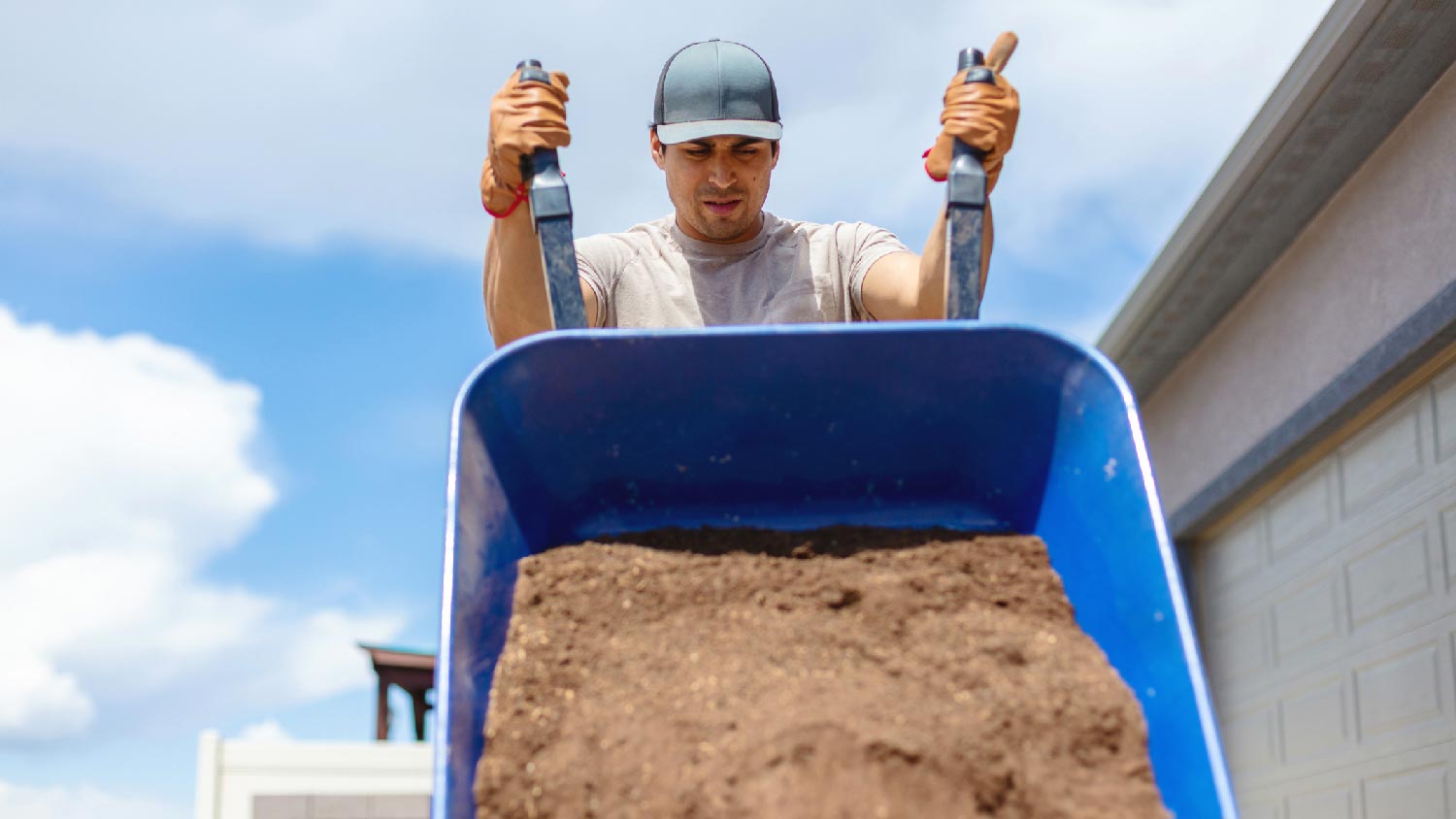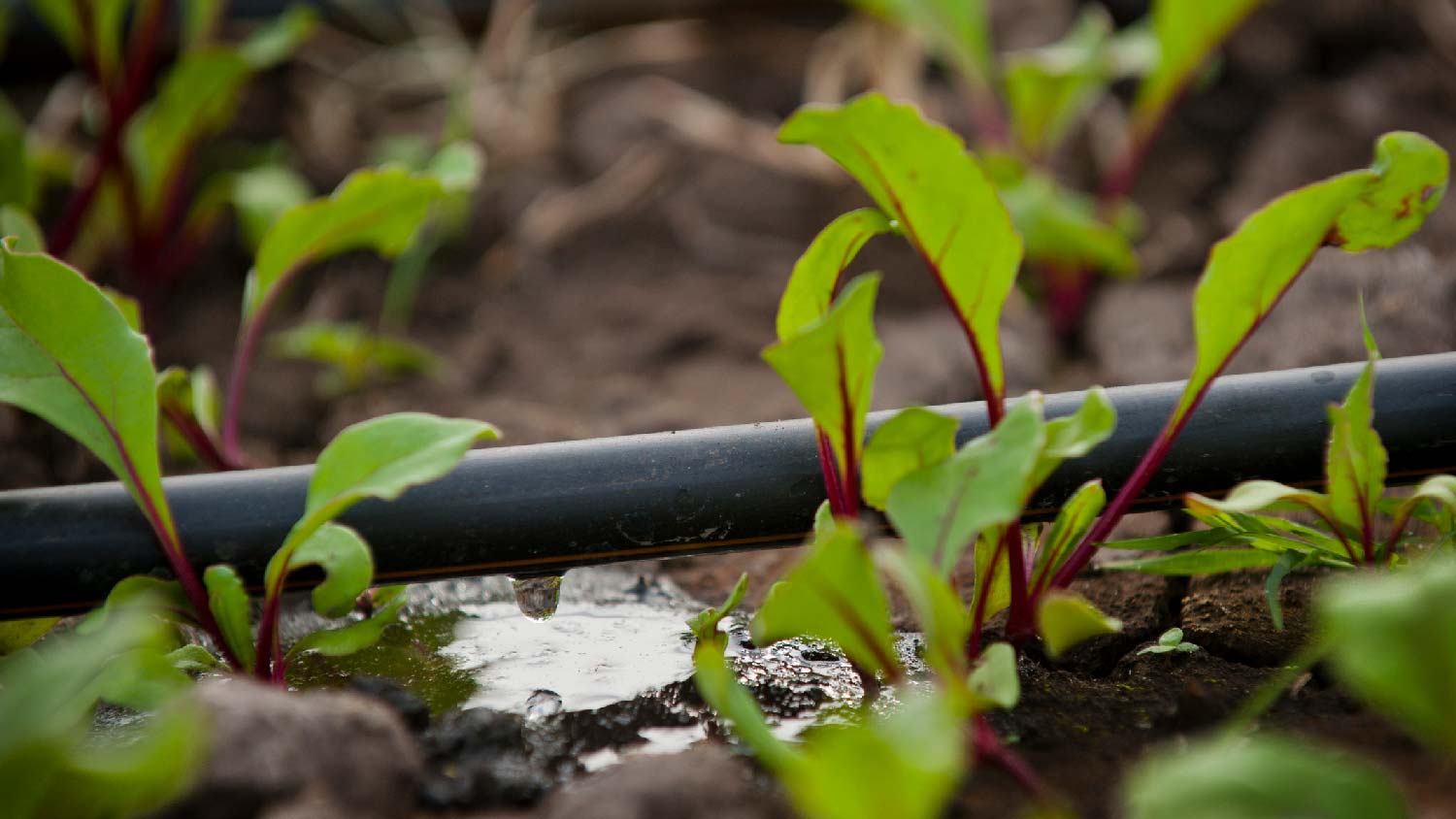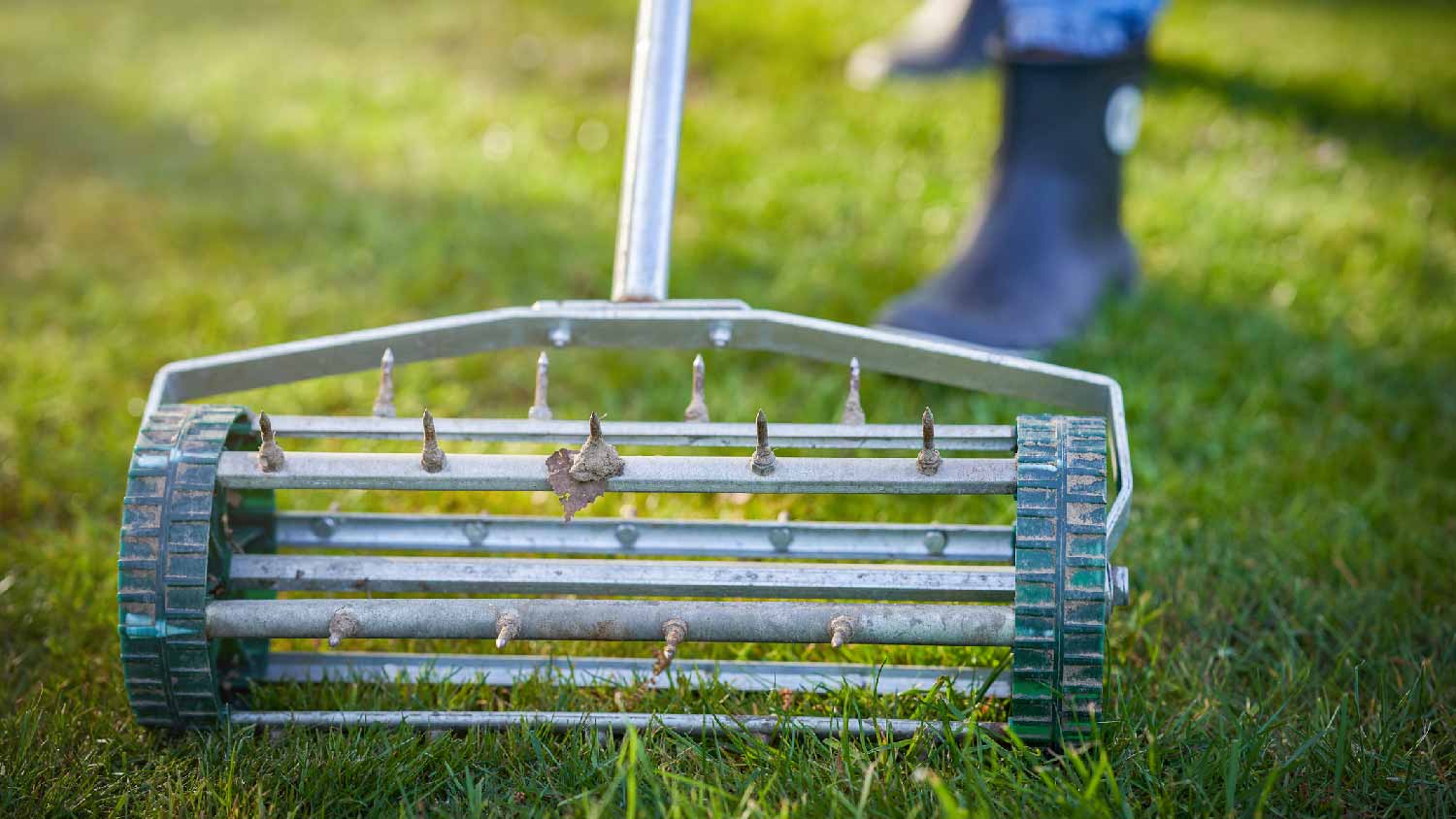What Is the Cost of Topsoil? [2025 Data]
The average cost of topsoil ranges from $15 per cubic yard to $30 per cubic yard, with a national average of $20 per cubic yard. Factors like soil quality, depth, and the area covered can affect pricing.


The average cost of topsoil is $20 per cubic yard, with most applications costing between $15 per cubic yard and $30 per cubic yard. Depending on factors like soil quality and depth, as well as the area covered, you can expect to pay anywhere from $10 per cubic yard to $55 per cubic yard. Let’s take a look at how to budget for a topsoil project.
Topsoil Cost Factors
These are the main factors to consider when planning your budget for topsoil application.
Types
The cost of topsoil varies depending on the type and quality of the soil, with prices typically ranging from $10 to $55 per cubic yard. Unscreened loam is the most affordable option, while organic compost and specialty mixes tend to be on the higher end.
| Topsoil Type | Cost per Cubic Yard |
|---|---|
| Unscreened loam | $10–$35 |
| Black dirt | $15–$25 |
| Screened loam | $18–$26 |
| Organic compost | $20–$55 |
| Mushroom compost | $20–$35 |
| Organic planting soil | $30–$50 |
| Landscape mix | $25–$50 |
| Super loam | $30–$50 |
Volume
Aside from orders by the cubic yard, you can order smaller or larger quantities of topsoil, and you’ll often see price breaks for bulk orders. A 40-pound bag of topsoil covers roughly 0.75 square feet and costs anywhere from $2.50 to $60, depending on the quality. A truckload, which typically carries between 10 to 15 cubic yards of topsoil, ranges from $150 to $750.
| Topsoil Purchase Volume | Cost Range |
|---|---|
| 40-pound bag | $3–$60 |
| Cubic yard | $10–$55 |
| Truckload | $150–$750 |
Coverage Area
Accounting for the standard 10% margin of waste, you’ll pay anywhere from $15 to $75 per 100 square feet of topsoil coverage at a depth of four inches (the minimum recommended for most lawn and garden applications). Coverage areas will vary based on the depth of the topsoil—check out this table to help you accurately determine the volume of topsoil you need.
| Coverage Area in Square Feet | Range |
|---|---|
| 100 | $15–$75 |
| 300 | $40–$225 |
| 600 | $80–$450 |
| 800 | $110–$600 |
| 1,000 | $140–$750 |
| 1,200 | $160–$900 |
| 1,500 | $205–$1,120 |
| 1,800 | $245–$1,340 |
| 2,000 | $270–$1,500 |
| 2,500 | $340–$1,870 |
| 5,000 | $680–$3,740 |
| 10,000 | $1,360–$7,480 |
Delivery
Delivery fees for topsoil and fill dirt can range from $50 to $150 per trip for up to 15 cubic yards, depending on the supplier. Some companies include delivery in their pricing, while others charge separately. If you're ordering a large load, live in a remote area, or have a site that's difficult to access, you can expect higher fees. Longer distances, larger trucks, and fuel surcharges can also add to the overall cost.
Instead of a flat rate, some companies charge $65 to $100 per hour for delivery. Keep in mind that delivery includes a single dump in an easily accessible location that’s at least 15 feet away from overhead trees and on firm, dry ground.
Labor

Lawn care professionals will charge between $60 to $125 per hour to deliver and spread your topsoil. Final costs depend on the size of the job and may be included in your estimate if you’re purchasing in bulk, so be sure to clarify everything that’s included in the quote.
Prep
Topsoil won’t fix poor soil quality if you’re growing deep-rooted plants, so you may need to add compost, manure, or fertilizers. If there are drainage issues on your property, these issues are important to address beforehand to avoid flooding and soil erosion.
If you’re not sure how your soil performs, consider getting a soil test or a perc test to give you a better idea of what adjustments, if any, need to be made. You can purchase an at-home soil test or find a professional who tests soil, such as a soil engineer or a landscaping company.
Fill Dirt
Topsoil isn’t meant to be your main growing medium, so if you need quality soil, consider budgeting between $350 and $1,300 for additional fill dirt. The best types of fill dirt are nutrient-enriched garden soils and composts.
Topsoil Ongoing Costs
Whether it’s for your land, lawn, or garden, here are a few ongoing costs to consider for the long-term health of your soil.
Soil Amendments
Whether you’re preparing soil for grass seed or maintaining a healthy medium for planting, it’s always a good idea to amend your soil regularly to keep it nutrient-rich and suitable for plant growth. Organic options like compost and mulch can improve soil structure, while fertilizers replenish essential nutrients. The frequency and type of amendments depend on your soil’s condition and the needs of your plants.
Irrigation

Keeping topsoil moist is essential for plant health, which may require irrigation. Manual watering with hoses and sprinklers is a lower-cost option, while installing a drip irrigation system or sprinkler system involves a higher upfront investment but can save water in the long run. Remember that over-irrigating can damage soil, so be sure to monitor moisture levels and adjust watering accordingly.
Mulching
Adding a layer of mulch on top of your soil helps retain moisture, regulate temperature, and reduce weed growth. Organic mulches, like wood chips or straw, decompose over time and may need to be replenished annually.
Weed Control
Weeds can deplete nutrients from your topsoil and harm your plants. You may need to invest in herbicides, natural weed barriers, or pest control treatments to keep your soil in good condition.
DIY Topsoil Installation vs. Hiring a Pro
Choosing between DIY topsoil installation and hiring a professional depends on your project size, experience level, and your budget. DIY can save money on smaller projects if you have the necessary tools like a wheelbarrow and shovel. However, it can be physically demanding, and improper installation might lead to drainage issues or uneven coverage, which can destroy the healthy look of your lawn, garden, or landscape.
For larger projects or uneven terrain, or to guarantee that you’ll have flawless and lasting results, hiring a local lawncare professional is the wisest choice. Experts have the right equipment and skills to efficiently spread and level topsoil, ensuring proper drainage and grading. They can also recommend suitable soil types and may include delivery in their services. Though costs can range from $60 to $125 per hour, professional help can save you time and reduce the risk of mistakes, making it a worthwhile investment.
Cost of Common Topsoil Add-Ons

From irrigation to landscape maintenance, there are a number of add-ons to consider for this project. Consider these average costs with your overall budget:
Lawn fertilization cost: $70–$380
Lawn aeration cost: $75–$205
Cost to edge a lawn: $700–$1,700
Lawn mowing costs: $50–$210
Leaf removal costs: $190–$540
Sprinkler system cost: $1,640–$3,600
Drip irrigation system cost: $200–$850
Land clearing cost: $1,400–$6,300
Land grading cost: $1,000–$3,340
Soil test cost: $680–$2,160
Grass seeding cost: $440–$1,800
Sod installation cost: $1,100–$3,100
Landscape designer cost: $1,940–$7,250
Landscaping costs: $1,300–$6,300
Tips to Reduce Your Topsoil Costs
Check out these helpful tips for keeping your topsoil costs within your budget.
Buy only what you need: Be sure to measure your project area and required depth beforehand to avoid unnecessary costs from overordering.
Buy in bulk: If you need a substantial amount of topsoil, purchasing in bulk can lower the cost per cubic yard.
Pick up the topsoil yourself: To avoid delivery fees, consider picking up your own topsoil if you have access to a truck.
DIY the prep work: Learning how to test your soil’s pH and make any necessary amendments will save on additional prep costs and help ensure the long-term health of whatever you plant in your soil.
Purchase during the off-season: Buying topsoil during off-peak seasons, such as late fall or early spring, can result in better deals.
Compare prices and quality: Check multiple suppliers, including local nurseries, hardware stores, and landscaping companies, to find the best quality soil for the best price.
Be wary of hidden fees: Some suppliers charge extra for mixing, delivery, or fuel surcharges, so it’s crucial to ask about all costs upfront to avoid surprises.
How Angi Gets Its Cost Data
Home is the most important place on earth, which is why Angi has helped more than 150 million homeowners transform their houses into homes they adore. To help homeowners with their next project, Angi provides readers with the most accurate cost data and upholds strict editorial standards. We extensively research project costs to develop the pricing data you see, so you can make the best decisions for you and your home. We rely on reputable sources, including the U.S. Bureau of Labor Statistics, academic journals, market studies, and interviews with industry experts—all to ensure our prices reflect real-world projects.
Want to help us improve our cost data? Send us a recent project quote to costquotes@angi.com. Quotes and personal information will not be shared publicly.
Frequently Asked Questions
Topsoil is nutrient-rich soil that contains organic matter, making it ideal for gardening, planting, and improving soil quality. It promotes plant growth and retains moisture. Fill dirt, on the other hand, lacks organic material and is primarily used for structural purposes, such as leveling land, filling holes, and creating foundations. Since fill dirt is compact and stable, it prevents settling, while topsoil remains loose to support plant roots.
When choosing between potting soil versus topsoil for grass, always opt for the topsoil. This is because potting soil typically contains a nutrient-rich mix of non-soil ingredients such as peat moss, pine bark, perlite, and vermiculite. These usually contain little, if any, actual soil, so they’re not suitable for ground use.
Ideal topsoil depths can vary significantly, with most projects seeing depths of between three to eight inches. Topsoil applications for lawns are typically between four to six inches, while six to eight inches is a good depth for most garden plants. When determining the best depth for your project, it’s crucial to consider what you’re planting and the quality of topsoil you’re using, as well as the quality of the fill dirt (or the existing dirt you’re covering).
One cubic yard of topsoil will cover approximately 100 square feet at a depth of three inches. The actual coverage area per cubic yard will vary based on the depth of the soil, so it’s important to calculate beforehand to determine how much topsoil you’ll need to avoid over-purchasing (or under-purchasing).





- Landscapers
- Tree Surgeons
- Gardening Services
- Landscape Architects
- Sod Installation
- Tennis Court Contractors
- Landscape Design
- Retaining Wall Companies
- Grading Companies
- Landscape Rock & Sand Delivery
- Mulch Delivery Services
- Pond Companies
- Artificial Grass Companies
- Shrub Removal & Trimming
- Backyard Design Companies
- Commercial Landscaping
- Koi Pond Services
- Backyard Landscapers
- Trampoline Assembly
- Hedge Trimming
- Pond Services
- Garden Design
- Outdoor Plant Watering
- Putting Greens
- French Drains
- Turf Installation
- Sod Removal Services
- Lawn Repair Services
- Brush Chipping Services
- Hardscape Contractor
- Landscape Rock Removal










